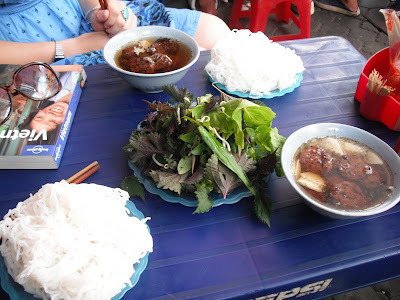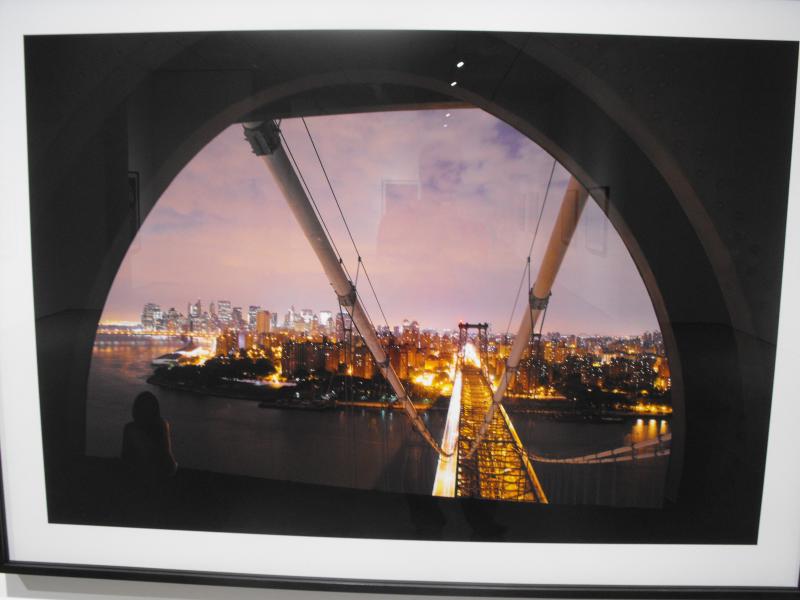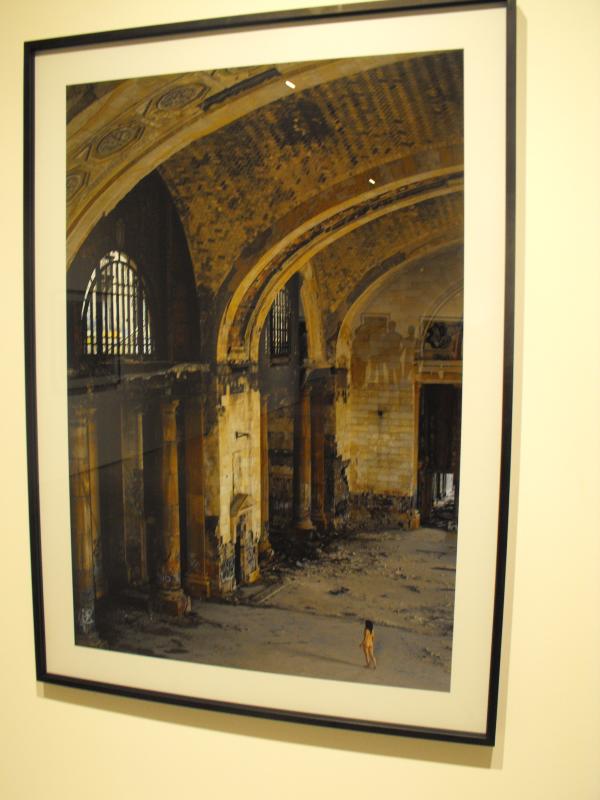Recent Blog Posts
Bun Cha

Bun Cha is a lunchtime favourite that marries rice noodles, grilled pork meatballs and a fish sauce infused broth in a fantastic dish that screams our arrival in South East Asia.
In classic street food style we didn't even have to order this one - our lunch was brought to us while we were still fiddling about in the Lonely Planet food section and looking around us awkwardly.
We each recieved a plate of lukewarm, slightly sticky rice noodles and a bowl of broth. We also got a large plate of leaves to share and some chopped chili and garlic by way of condiments.
It was all pretty intuitive - take a small bunch of noodles, drop it in the broth along with some leaves, chili and garlic and then gather up as much as you can with your chopsticks, making sure to grab some of that pork along the way.
What happened next was outstanding; the pork meatballs were charred on the outside and medium rare in the middle, containing subtle hints of a spice mix I was having too much fun to even think about. The broth, meanwhile, was in turns sweet, savory and spicy, the unmistakable tang of fish sauce acting as a prelude to the slow chili burn that followed. Apart from the lettuce, I have no idea what the other leaves were. Suffice to say that they were good, with a nippy little purple number making a particular impression.
So good was lunch in fact, that I barely registered the three mice that scurried past our table during the course of our meal.
Now thats what I call food.
The Meaning of 2080 Toothpaste
But as I'm sure you're all wondering, what on earth does 2080 mean?
The meaning of 2080 perplexed me for an eternity before I chanced upon the answer right there on the tube. It means that it will maintain 20 of your teeth until you are 80 years of age. Therefore, should I continue to use 2080, I am due to lose around 8 of mine sometime before then.
Preferably not my molars.
South Korea Trip - Pohang 포항
Microsoft: Asians are OK. Blacks, well, uhmm
Review: Miru Kim's photography at Gallery Hyundai offers a new perspective


The Williamsburg Bridge in New York. Although nude, Ms. Kim appears neither erotic nor sensual. The female form is only clearly evident in a few of the 50+ photographs; while she seems to make little effort to hide herself, the focus is clearly on the place. Her nudity is done for herself, not the audience.

A catacomb in Paris, France. The lights she's holding is a carbide lamp, which creates a warm yellow light also used in the mining field. She explains them as being safer and long-lasting, but I'm sure it's no coincedence that they bring a more natural light to places that may have seen light in awhile. Other pictures are illuminated by sunlight or ambient light from, say, a city skyline.
Full of life (and ironically,death as well) Miru Kim is highly worth seeing if you enjoy urban exploring. Be sure to visit both floors of photographs.
Diretions to Gallery Hyundai: take line 3 of the Seoul subway system to the Apgujeong station. Take exit 2 to street level, then take a U-turn and turn right to follow Apgujeong-ro. Cross at the first light, then turn right. Turn left just before the Lush store - if you pass the Mini Stop you've gone too far. After turning left, the Gallery Hyundai will be straight ahead.
 © Chris Backe - 2009
© Chris Backe - 2009"Foreign nationals make up 2.4% of Seoul population"
The number of foreign residents in Seoul as of the end of last year reached 255,000, according to the city's e-Seoul Statistics, published yesterday. The corresponding figure in 1998 was 51,000.
Among all 152 nationalities, 192,618 (75.5 percent) of the foreign residents were Chinese, followed by the United States with 12,821 (5 percent), Taiwan with 8,818 (3.5 percent) and Japan with 6,840 (2.7 percent).
The Chinese residents mostly live in the western districts of Yeoungdeungpo and Guro, while Americans mostly reside in southern Gangnam and central Yongsan, where a major U.S. Armed Forces unit is located. The Taiwanese favored the Seodaemun and Mapo area.
 © Chris Backe - 2009
© Chris Backe - 2009Life in Korea: 100 Korean words to sound more like a local (part 1 of 3)
UPDATE: I owe a few hat tips to a few expats more versed in Korean than myself. Those, along with some corrections are sprinkled throughout the post.
So you've made it to Korea, learned some hangeul (the Korean alphabet) and have gotten pretty good at reading menus, signs, and subway stops (check out the Korean Wiki Project if you haven't!). That, however, doesn't necessarily make it easier to communicate something in Korean, and hand motions can only go so far.
It's time to pick up some common vocabulary words and ditch the phrasebook. You will see these words and phrases again and again - and in some cases a couple words is all you need. While the Korean Wiki Project has a metric ton of information at your disposal, let's get some basics under our belt. I should note that no group of 100 words can possibly cover everything you need to know. With that said, let's get it started!
The basics
- 안녕하세요 - An-nyeong ha-se-yo? - Your basic formal hello - you should already know this after your first or second day here.
- 잘지내 - Jal-ji-nae? - How are you, or what's up? A more casual 'hello' amongst friends or peers. HT to Matt for suggesting another meaning of 'long-time, no-see'.
- 감사합니다 - Kam-sa hab-ni-da - Your basic formal thank you - again, you probably know this after your first or second day here.
- 고맙습니다 - Go-mab seub-ni-da - Another way of saying 'thank you' - still formal in nature.
- 고마워 - Go-ma-wo - A more casual 'thank you'.
- 천만에요 cheon-man-e-yo - you're welcome.
- 아마도 - a-ma-do - maybe.
The classroom (click here for some more Korean in the classroom)
- 조용히해 - jo-yong-hi-hae - be quiet
- 한국말 하지 마세요 - han-gook-mal ha-jee-mah-say-yo - don't speak Korean
- 시작 - si-jak - start, as in start working
- 알겠지 - all-get-gee - do you understand?
- 아주마 - A-ju-ma - a married or older woman.
- 아저씨 - A-jeo-ssi - a married or older man.
- 아가씨 - A-ga-ssi - a young or unmarried woman.
- 선생님 - Seon-saeng-nim - teacher
- 학생 - Hak-saeng - student
- 회사원 - Hoi-sa-won - salaryman or company worker
- 꽃미남 - ggoch-mi-nam (pronounced goat-mee-nam - HT to patrick) - flower boy
- 왕따 - wang-dda - a dork or nerd, a person nobody likes (slang)
- 방 - bang - by itself, it's just a room. It's what you do in the room that will complete the noun.
- 노래방- no-rae-bang - literally, singing room. Also a place to hear singing, usually badly and by drunk people.
- 공원 - gong-won - a good old-fashioned park.
- 모텔 - mo-tel - motel; one of few Korean words transliterated from English that doesn't sound different whichever language you use.
- 여관 - yeo-gwan - smaller family-run hotel. Usually cheaper and more basic. (HT to White Rice for catching the vowels)
- 역 - yeok - by itself, a stop or station. Combine it with the name of a subway station and you're in business. For example, Seoul Station is 서울역.
- 시장 - si-jang - a traditional market of some kind, usually open-air and outdoors.
- 맥주 - maek-ju - good old-fashioned beer. Add 생 (saeng) in front if you want draft, or 변 if you desire a bottle.
- 소주 - so-ju - you probably learned this one in your first week here. If not, there's plenty more about Korea's firewater over here.
- 막걸리 - mak-geol-li - milky-colored rice wine.
- 와인 - wa-in - wine
- 취한 - chi-han - to be drunk. For example, I am drunk = 난 취했어
- 취하지 - chi-ha-ji - to be sober. HT to White Rice for suggesting these are adjectives - not sure how to conjugate these, but perhaps just the word will be enough.
- 해장 haejang = food or drink to relieve a hangover
33 down, 67 to go - stay tuned for more.
Did I miss something or get something wrong? Comments are open.
 © Chris Backe - 2009
© Chris Backe - 2009Banned in the PRC!

So for some reason, Street Foodie was caught up in the 10% of all websites blocked in China. As such, I've relied on my Dad to post for me for the last five weeks. Thanks Dad!
Whether it was my reckless use of bad puns or my virtual ignornarance of spelling and punctuation we'll never know. What I do know is that now I'm back online I'll be posting MUCH more frequently and being a much better webmaster all round.
Looking forward to writing about Vietnam. Street food is everywhere and the ice coffee has been keeping me awake at night.




 RSS Feed
RSS Feed
Recent comments